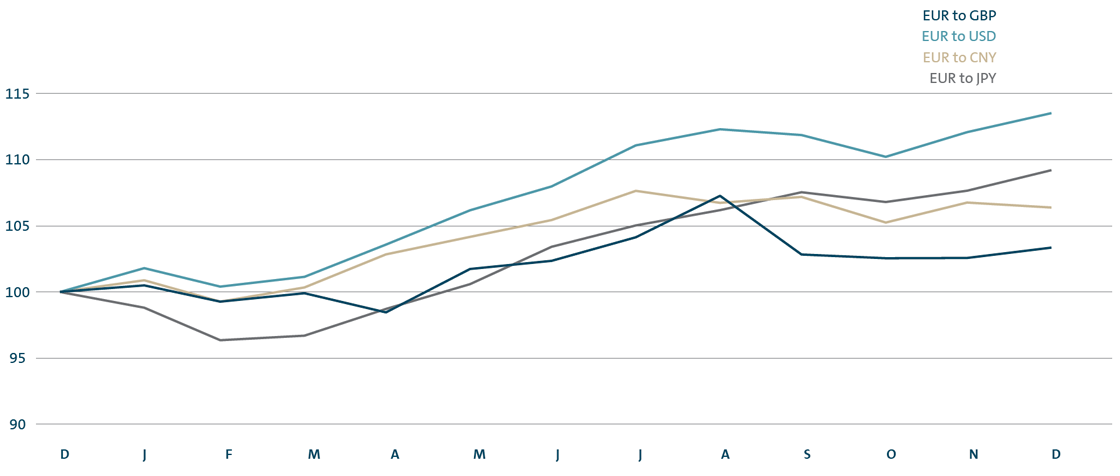Business Development
The global economy grew more strongly in fiscal year 2017 than in the previous year. However, global demand for vehicles did not rise as sharply as in the year before. Amid challenging market conditions, the Volkswagen Group delivered 10.7 million vehicles to customers for the first time.
DEVELOPMENTS IN THE GLOBAL ECONOMY
Global gross domestic product (GDP) rose by 3.2 (2.5)% in 2017. Economic momentum accelerated in both advanced economies and emerging markets year-on-year. Consumer prices increased at a slower pace worldwide than in the previous year, with persistently low interest rates and rising energy and commodity prices.
Europe/Other Markets
GDP growth in Western Europe edged up slightly during the year to 2.3 (1.8)%, with the majority of the countries in this region seeing higher growth rates. The start of the Brexit negotiations between the United Kingdom and the European Union generated uncertainty, as did the question of what form this relationship would take in the future. The unemployment rate in the eurozone continued to decrease, falling to an average of 9.6 (10.6)%, though rates remained considerably higher in Greece and Spain.
The Central and Eastern Europe region recorded a relatively strong increase in GDP in the reporting period with an increase of 3.8 (1.8)%. In Central Europe, the general uptrend gained traction, and in Eastern Europe the economy also grew at a considerably stronger pace than in the previous year. Higher energy prices led to a stabilization of the economic situation in the countries from this region that export raw materials. A growth rate of 1.6 (−0.4)% marked the end of the recessionary period in Russia.
South Africa’s GDP rose by just 0.9 (0.3)%, only slightly higher than the low figure for the previous year. Ongoing structural deficits, social unrest and political challenges weighed on the economy.
Germany
The German economy continued to profit from optimistic consumer sentiment and a good labor market, which led to a sharper year-on-year increase in GDP to 2.5 (1.9)% in 2017.
North America
Economic growth in the USA was faster than in the previous year, at 2.2 (1.5)%. The economy was supported mainly by private consumption and the expansionary monetary policy. Private gross investments also developed positively. The average unemployment rate was 4.4 (4.9)%. The US dollar was somewhat weaker than in the previous year. At 3.0 (1.4)%, GDP growth in Canada accelerated significantly. The growth rate of Mexico’s economic output fell somewhat to 2.2 (2.7)%.
South America
In the reporting period, Brazil left behind the economic downswing, with economic output increasing by 1.0 (−3.5)%. The situation in South America’s largest economy nevertheless remained tense, due to political uncertainty, among other things. Argentina’s GDP rose by 2.8 (−2.2)% in spite of structural deficits and persistently high inflation.
Asia-Pacific
The Chinese economy expanded at the previous year’s high level with a growth rate of 6.9 (6.7)%. The Indian economy continued its positive trend but, with a gain of 6.5 (7.1)%, grew somewhat less strongly than in the previous year. The Introduction of reform measures had a temporary dampening effect here. Japan registered solid GDP growth of 1.8 (0.9)%.

